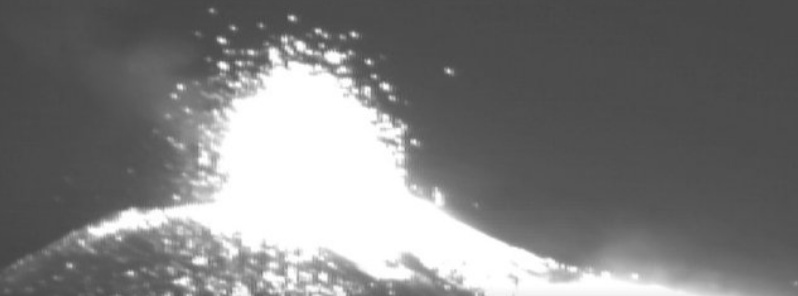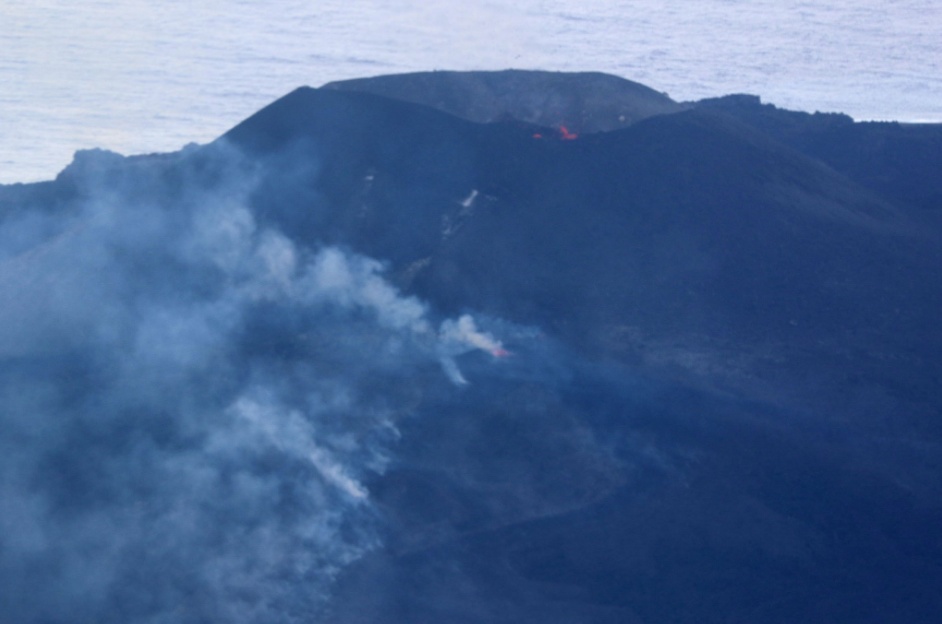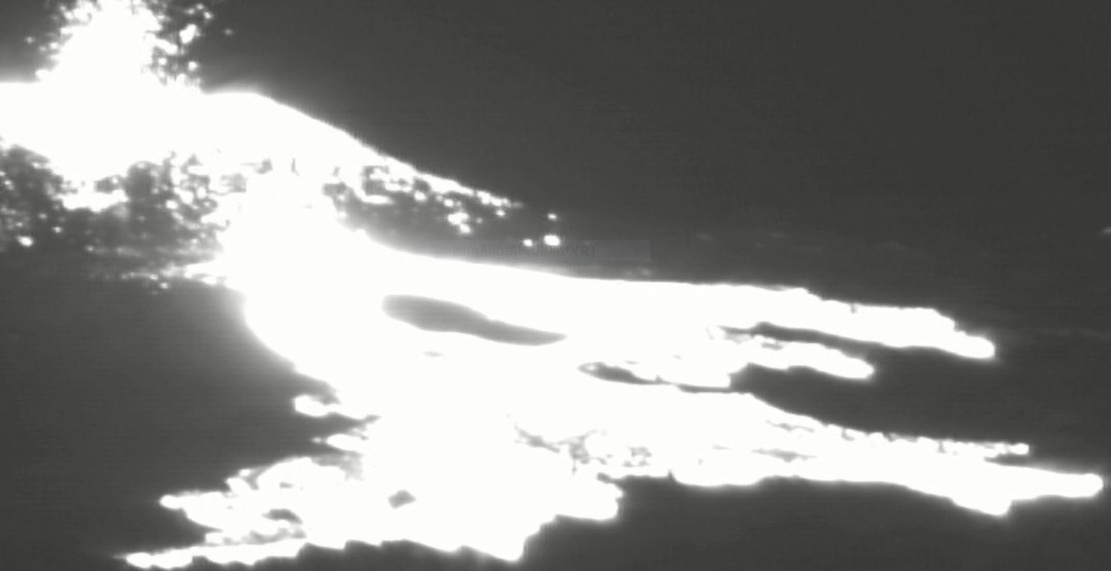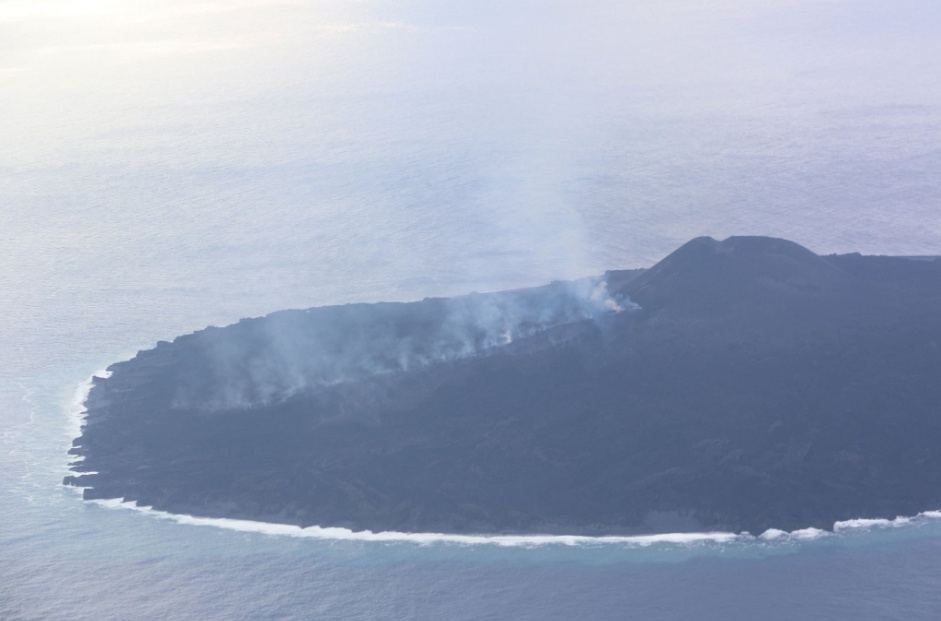New explosive-effusive activity at Nishinoshima volcano, Japan

A new explosive-effusive activity is taking place at the Japanese Nishinoshima volcano in the Izu-Bonin Volcanic Arch. Thermal anomalies were detected by satellites and confirmed by Japanese coastguard overflight on December 6.
The explosions are currently located at the main cone. A new vent that opened at the northeastern base of the cone is producing spattering and lava flows.



Nishinoshima erupting on December 6, 2019. Credit: Japan Coast Guard
Originally the above-water part of the ridge of an underwater caldera, Nishinoshima was first enlarged in 1974 after a series of eruptions created a new section of the island. Another eruption that began in November 2013 further enlarged the island and attracted worldwide attention.

Shortwave infrared image acquired on December 24, 2013. Image credit: NASA / Earth Observatory (ALI – EO-1)

Acquired on December 24, 2013. Image credit: NASA / Earth Observatory (ALI – EO-1).

Acquired on December 8, 2013. Image credit: NASA / Earth Observatory (ALI – EO-1).
A volcanic cone soon formed, raising to an estimated height of 142 m (466 feet) by July 2016. The eruptions ceased by November 2015, though emissions of volcanic gases continued for several months afterward.
As of 2016, the island is about 2.7 km² (667.18 acres) in size and evinces the return of various plants and animal species
New eruptions at the island were reported from April to June 2017 and July 2018.
Prior to 1974, Nishinoshima was tip of an undersea caldera #ridge when a new island created by eruptions merged with the older #Nishinoshima pic.twitter.com/ItrHMz6JRc
— jaime s. sincioco (@jaimessincioco) July 1, 2017
Geological summary
The small island of Nishinoshima was enlarged when several new islands coalesced during an eruption in 1973-74. Another eruption that began offshore in 2013 completely covered the previously exposed surface and enlarged the island again. Water discoloration has been observed on several occasions since.
The island is the summit of a massive submarine volcano that has prominent satellitic peaks to the S, W, and NE. The summit of the southern cone rises to within 214 m (702 feet) of the sea surface 9 km (5.6 miles) SSE. (GVP)
Featured image: Nishinoshima erupting on December 6, 2019. Credit: Japan Coast Guard

36 weeks times 70
Looking like time is up! 2520 = 2018
A big gulp from 7-11 might cool it down” in 2019 at harvest time.
I have warned many times about the Japanese nuclear power plants. I have stated repeatedly, that geological activities will increase enormously around the world, especially around the ring of fire in 2020. Now, the signs are very clear, although we are still in 2019. We have to salute the German authorities for starting to close its nuclear power plants. Germany decided to phase out all its nuclear power plants in the wake of the Fukushima disaster in 2011, amid increasing safety concerns. The seven power stations still in operation today are due to be closed in 2022. However, Japanese nuclear power plants are located on the most active geological region on the planet. And when the earth enters its final phase of pole shift, mega earthquakes and explosive volcanic eruptions will take place around the world, particularly around the ring of fire. Thus, without a doubt, Japanese nuclear power plants pose the greatest threat not only to the Japanese people, but also to the whole world.
Why do people still go on about pole shift. And what does it have to do with this?